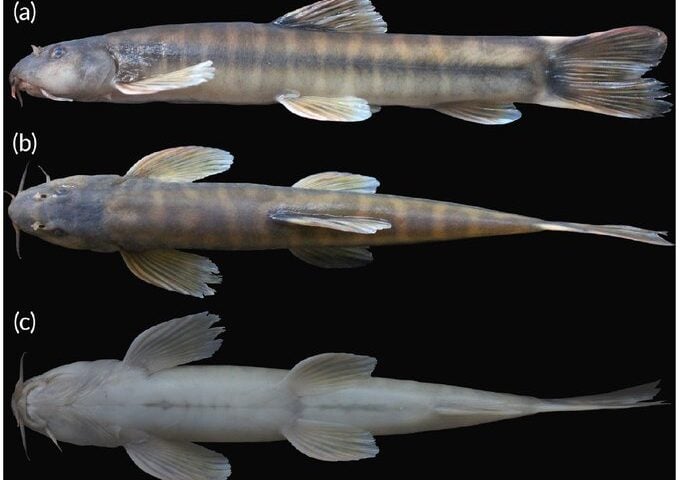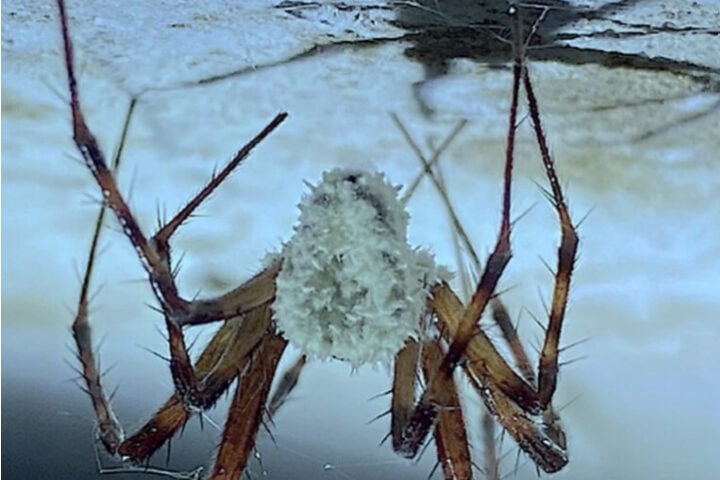Let’s talk about deep sea genetic quirks! An angular roughshark (Oxynotus centrina) rocking a ghostly white phenotype was caught near Albania’s coast. “This represents the first documented case of leucism in this species and the first colour disorder reported in the family Oxynotidae,” the study says.
Here’s where the cell biology gets fascinating: Unlike your classic albino phenotype with zero melanin production and those telltale red eyes, this shark’s melanocytes were doing a partial job. “The shark is a case of leucism, a rare genetic disorder that affects melanin production,” explains the study. The shark’s retinal pigmentation? Totally normal, but check out those whitish-gray patches where melanin synthesis went wonky!
Usually, these cartilaginous predators rock a dark gray-brown melanin cloak with extra pigment blotches on their cephalic and lateral regions—perfect for blending into that bathyal zone substrate. The cellular shenanigans behind leucism could theoretically mess with their cryptic coloration game.
Want to geek out about how rare this is? In all of chondrichthyan research history, we’ve only got 69 out of 1483 identified species documented cases of pigment disorders in deep-sea species. The potential mechanisms are a goldmine for molecular biologists. The most probable answer to the albinism in sharks is blockage of genes crucial to pigment formation. It is very rare in sharks because they become highly visible to prey and predators, so its unlikely they will survive for a long time.
Similar Posts
The locality data adds another layer of awesome—Vlorë’s waters are a hotspot for threatened elasmobranchs. We’re talking IUCN-listed species like Centrophorus uyato (little gulper shark) and Dalatias licha (kitefin shark ).
Marine ecologists are all over this, investigating potential links between anthropogenic stressors and the increased frequency of genetic anomalies in shark populations. The discovery opens up killer questions about phenotypic plasticity and adaptation mechanisms in deep-sea environments. Every new data point representing such discoveries is pure gold for understanding how these ancient cartilaginous fish are handling our rapidly changing oceans.
From a population genetics perspective, this builds on other documented leucism cases across marine taxa—like that super rare leucistic alligator with blue eyes recently hatched in Florida. But finding the case of non pigmentation in a deep-sea species is making researchers around the world curious. That’s next-level cool when you consider how different selective pressures are down in the bathyal zone, where light penetration is minimal.
It’s a sobering reminder too—these ancient chondrichthyans have survived multiple mass extinctions, but human impacts might be throwing new curveballs at their gene pools. Every weird pigmentation variant we document helps piece together the puzzle of how marine species adapt (or don’t) to anthropogenic change.


















